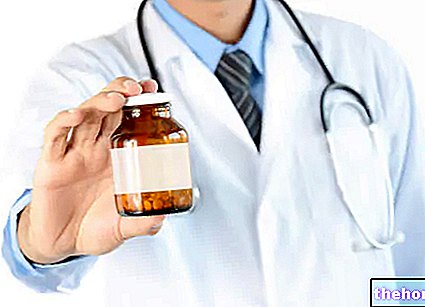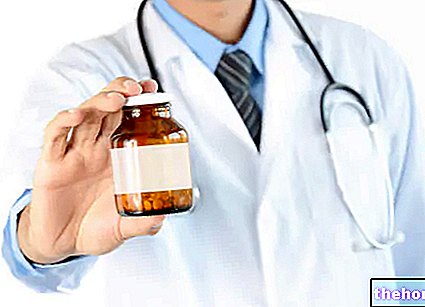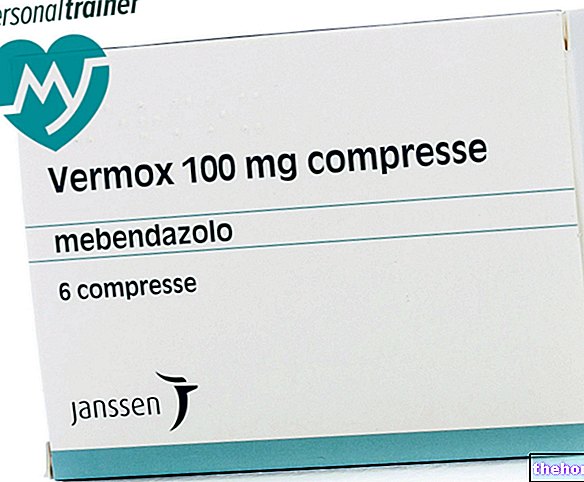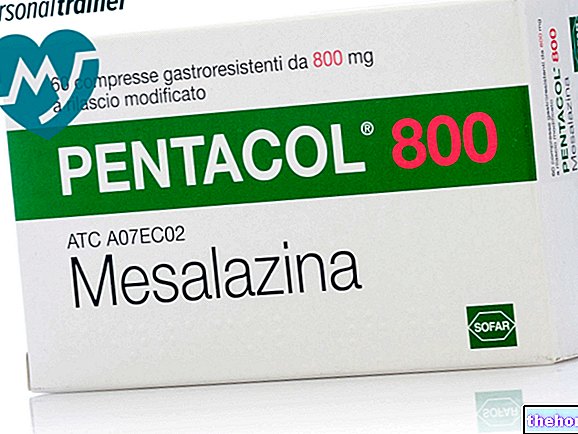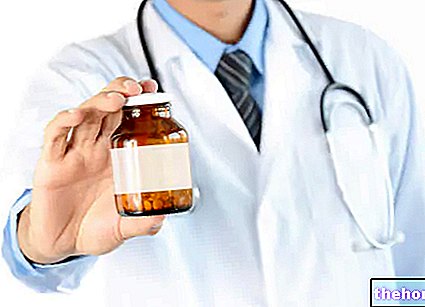Active ingredients: Ranitidina
Buscopan Antacid 75 mg effervescent tablets
Why is Buscopan antacid used? What is it for?
WHAT IS IT
BUSCOPAN ANTIACIDO contains ranitidine which belongs to the group of medicines known as histamine H2 receptor antagonists.
H2 receptor antagonists temporarily reduce the production of acid in the stomach, to remove the cause of heartburn and indigestion from hyperacidity; however, there is still a quantity of acid sufficient to favor digestion.
WHY IT IS USED
BUSCOPAN ANTIACIDO is used for the symptomatic treatment of occasional heartburn and hyperacidity of the stomach.
Contraindications When Buscopan antacid should not be used
Hypersensitivity (allergy) to the active substance or to any of the excipients.
Precautions for use What you need to know before taking Buscopan antacid
Ranitidine is eliminated by the kidney, therefore plasma levels of the drug are increased in patients with renal impairment. The dosage should be adjusted as specified in the section HOW TO USE THIS DRUG - Kidney damage.
In patients such as the elderly, people with chronic lung disease, people with diabetes, or people who are immunocompromised, there may be an increased risk of developing community-acquired pneumonia.
Interactions Which drugs or foods can modify the effect of the antacid Buscopan
Tell your doctor or pharmacist if you have recently taken any other medicines, even those without a prescription.
Ranitidine may affect the absorption, metabolism and renal excretion of other drugs. Therefore, following the alteration of the pharmacokinetic parameters, it may be necessary either to adjust the dosage of the drug concerned, or to interrupt the treatment.
Interactions with other drugs are due to different mechanisms of action, including:
- inhibition of the mixed function oxygenase system linked to hepatic cytochrome P450: ranitidine, at standard therapeutic doses, does not potentiate the action of drugs that are inactivated by this enzyme system, such as diazepam, lidocaine, phenytoin, propranolol, theophylline. there have been cases of alteration of the prothrombin time following the intake of coumarin-based anticoagulants (eg warfarin). Due to the low therapeutic index, close monitoring of prothrombin time is recommended during concomitant treatment with ranitidine;
- competition for renal tubular secretion: since ranitidine is partially eliminated via the cationic system, it may affect the clearance of other drugs eliminated by this route. High doses of ranitidine (such as those used in Zollinger-Ellison syndrome) can reduce the excretion of procainamide and N-acetylprocainamide leading to an increase in the plasma levels of these drugs;
- gastric pH alteration: concomitant treatment with ranitidine may affect the bioavailability of some drugs. There may be an increase in absorption (such as for drugs such as triazolam, midazolam, glipizide) or a decrease in absorption (such as for drugs such as ketoconazole, atazanavir, delaviridine, gefitnib). Therefore, monitoring and dosage modification of these drugs may be necessary.
If high doses (2 g) of Sucralfate (a medicine to treat inflammation of the stomach, duodenum or esophagus) are given at the same time as BUSCOPAN ANTIACIDO, the absorption of the latter may be reduced; this effect does not occur if Sucralfate is taken after 2 hours.
There is no evidence of an interaction between ranitidine and amoxicillin and metronidazole.
Warnings It is important to know that:
Before starting therapy in patients with gastric ulcer or in middle-aged or older patients presenting with recent onset or recently modified dyspeptic symptoms, the possible malignant nature of the ulcer must be excluded because treatment with ranitidine, contained in BUSCOPAN ANTIACID, it can mask the symptoms associated with stomach cancer and can therefore delay diagnosis.
Regular medical monitoring is recommended for patients taking non-steroidal anti-inflammatory drugs concomitantly with ranitidine treatment, especially if elderly or previously suffering from a peptic ulcer.
When it can be used only after consulting your doctor
Before taking BUSCOPAN ANTIACIDO the following patients should consult their doctor:
- patients with severe kidney or liver problems;
- patients undergoing regular medical supervision for other reasons;
- patients suffering from any other disease or taking prescription medications;
- middle-aged or older patients who have recently onset or recently changed dyspeptic symptoms;
- patients with unintended weight loss accompanying dyspeptic symptoms;
- patients suffering from a rare metabolic disease called Porphyria;
- patients who are at increased risk of developing a "gastric or duodenal ulcer, or who have had a" gastric or duodenal ulcer (eg patients using non-steroidal anti-inflammatory drugs).
It is also advisable to consult your doctor in cases where these disorders have occurred in the past.
What to do during pregnancy and breastfeeding
Ask your doctor or pharmacist for advice before taking any medicine.
Ranitidine crosses the placental barrier and is excreted in breast milk. As with other drugs, ranitidine should be used during pregnancy and lactation only if considered essential and only after consulting your doctor.
Use should also be avoided, unless otherwise advised by medical advice, in the case of suspected pregnancy or a maternity plan. Information on fertility There are no data on the effects of ranitidine on human fertility. Studies in animals have shown no effects. neither on male or female fertility.
Effects on ability to drive and use machines
There are insufficient data on the effects of ranitidine at a dose of 75 mg on the ability to drive and use machines.
Important information about some of the excipients
This medicinal product contains 316 mg of sodium per effervescent tablet.
To be taken into consideration in people on a low sodium diet The aspartame in this medicine is a source of phenylalanine. It can be harmful to people with phenylketonuria.
BUSCOPAN ANTIACIDO contains sorbitol: if your doctor has diagnosed you with an "intolerance to some sugars, contact your doctor before taking this medicine.
Health education notes
Several factors can contribute to heartburn, difficult digestion and hyperacidity:
- eating to excess
- bad eating habits
- overweight
- Sedentary life
- smoke
- excessive alcohol intake. It is advisable, whenever possible, to moderate your lifestyle as the control of each of the factors mentioned can help to avoid this symptomatology.
Dose, Method and Time of Administration How to use Buscopan antacid: Posology
How many
Adults:
Take one BUSCOPAN ANTIACIDO tablet when you feel symptoms. In most cases, treatment with 1 or 2 tablets per day is sufficient. Up to 4 tablets can be taken in 24 hours.
Warning: do not exceed the indicated doses without medical advice.
Renal impairment:
Accumulation of ranitidine resulting in elevated plasma concentrations may occur in patients with renal impairment. It is recommended that, following the doctor's advice (see "When it can only be used after consulting the doctor"), the patient does not take more than two tablets of BUSCOPAN ANTIACIDO in a 24 hour period.
Children:
The use of BUSCOPAN ANTIACIDO tablets is not recommended in children under 16 years of age.
When and for how long
BUSCOPAN ANTIACIDO should be taken when symptoms are felt, both day and night. BUSCOPAN ANTIACIDO works within 30 minutes and can control excess acidity for up to 12 hours allowing for quick and long-lasting relief from symptoms during the day and night.
Do not use for more than two weeks. If symptoms continue or worsen after 14 days of treatment, consult your doctor or pharmacist.
Like
Dissolve an effervescent tablet of BUSCOPAN ANTIACIDO in a glass of water and immediately drink the solution obtained, as soon as symptoms are felt, at any time of day and night.
Overdose What to do if you have taken an overdose of the antacid Buscopan
In case of accidental ingestion of an excessive dose of BUSCOPAN ANTIACIDO, immediately notify your doctor or go to the nearest hospital.
Symptoms
Ranitidine has a very specific pharmacological activity so no particular problems are expected following drug overdose.
Treatment
If necessary, appropriate symptomatic and supportive therapy should be given. If you have any questions about the use of this medicine, ask your doctor or pharmacist.
Side Effects What are the side effects of Buscopan antacid
Like all medicines, BUSCOPAN ANTIACIDO can cause side effects, although not everybody gets them.
The following convention has been used for the classification of undesirable effects: very common (> 1/10), common (> 1/100, 1/1000, 1/10000, <1/1000), very rare (<1/10000 ), or not known (frequency cannot be estimated from the available data).
The frequencies of adverse events were estimated based on post-marketing spontaneous reporting data.
Disorders of the blood and lymphatic system
- Very rare: changes in blood cell counts (leukopenia, thrombocytopenia). These are typically reversible. Agranulocytosis or pancytopenia sometimes accompanied by bone marrow hypoplasia or aplasia.
Disorders of the immune system
- Rare: hypersensitivity reactions (urticaria, angioneurotic edema, fever, bronchospasm, hypotension, chest pain).
- Very rare: anaphylactic shock.
- Not known: dyspnoea. The above events have been reported following administration of a single dose.
Psychiatric disorders
- Very rare: reversible mental confusion, depression, hallucinations. The above events have been reported mainly in severely ill patients, the elderly and renal patients.
Nervous system disorders
- Very rare: headache (sometimes severe), dizziness, reversible involuntary movements.
Eye disorders
Very rare: reversible blurring of vision. Cases of blurred vision attributable to alteration in accommodation have been reported.
Cardiac pathologies
- Very rare: as with other H2 receptor antagonists, bradycardia, atrioventricular block and tachycardia.
Vascular pathologies
- Very rare: vasculitis.
Gastrointestinal disorders
- Very rare: acute pancreatitis, diarrhea.
- Uncommon: abdominal pain, constipation, nausea (these symptoms almost always improve during the course of treatment).
Hepatobiliary disorders
- Rare: reversible transient changes in liver function tests.
- Very rare: usually reversible hepatitis (hepatocellular, hepatocanalicular or mixed) with or without jaundice.
Skin and subcutaneous tissue disorders
- Rare: skin rash.
Very rare: erythema multiforme, alopecia.
- Musculoskeletal and connective tissue disorders
- Very rare: symptoms affecting the musculoskeletal system such as arthralgia and myalgia.
Renal and urinary disorders
- Very rare: acute interstitial nephritis.
- Rare: increase in plasma creatinine (usually mild; normalizes during treatment).
Diseases of the reproductive system and breast
- Very rare: reversible impotence. Breast symptoms such as gynecomastia and galactorrhea.
Compliance with the instructions contained in the package leaflet reduces the risk of undesirable effects.
Reporting of side effects
If you get any side effects, talk to your doctor or pharmacist. This includes any possible side effects not listed in this leaflet. Side effects can also be reported directly via the national reporting system at www.agenziafarmaco.it/it/responsabili. By reporting side effects you can help provide more information on the safety of this medicine.
Expiry and Retention
Expiry: see the expiry date printed on the package.
The expiry date refers to the unopened product, properly stored.
Warning: do not use the medicine after the expiry date indicated on the package.
Store at a temperature not exceeding 25 ° C.
Medicines should not be disposed of via wastewater or household waste. Ask your pharmacist how to dispose of medicines you no longer use. This will help protect the environment.
Keep this medicine out of the reach and sight of children.
It is important to always have the information on the medicine available, so keep both the box and the package leaflet.
Other information
COMPOSITION
One effervescent tablet of BUSCOPAN ANTIACIDO contains:
- Active ingredient: ranitidine hydrochloride 83.7 mg, equal to ranitidine 75 mg.
- Excipients: monobasic sodium citrate, sodium bicarbonate, disodium citrate, sorbitol, grapefruit flavor, aspartame, leucine, sodium benzoate, simethicone in emulsion.
HOW IT LOOKS
BUSCOPAN ANTIACIDO comes in the form of effervescent tablets for oral use. The contents of the pack are 10 effervescent tablets.
Source Package Leaflet: AIFA (Italian Medicines Agency). Content published in January 2016. The information present may not be up-to-date.
To have access to the most up-to-date version, it is advisable to access the AIFA (Italian Medicines Agency) website. Disclaimer and useful information.
01.0 NAME OF THE MEDICINAL PRODUCT
BUSCOPAN ANTIACIDO 75 MG EFFERVESCENT TABLETS
02.0 QUALITATIVE AND QUANTITATIVE COMPOSITION
One effervescent tablet of BUSCOPAN ANTIACIDO contains:
Active ingredient: 83.7 mg ranitidine hydrochloride, corresponding to 75 mg ranitidine.
Excipients with known effects:
aspartame 30 mg;
sorbitol 187.8 mg;
sodium 316 mg.
For the full list of excipients see 6.1.
03.0 PHARMACEUTICAL FORM
Effervescent tablets for oral use.
04.0 CLINICAL INFORMATION
04.1 Therapeutic indications
Symptomatic treatment of occasional heartburn and hyperacidity of the stomach.
04.2 Posology and method of administration
Adults: Take one BUSCOPAN ANTIACIDO tablet when symptoms are felt, both day and night.
Treatment with 1 or 2 tablets per day is sufficient in most patients. Up to 4 tablets can be taken in 24 hours.
It is not necessary to take the tablets with food.
Dissolve the tablet in a glass of water (about 200 ml).
Patients should be advised to consult their physician or pharmacist if symptoms continue, worsen, or persist after 14 days.
Buscopan Antacido relieves symptoms for up to 12 hours.
Renal impairment
Accumulation of ranitidine resulting in high plasma concentrations may occur in patients with renal impairment. It is recommended that, following the doctor's advice (see 4.4 Special warnings and special precautions for use), the patient does not take more than two tablets of BUSCOPAN ANTIACIDO in any 24 hour period.
Children: It is not recommended to use BUSCOPAN ANTIACIDO tablets in children under 16 years of age.
04.3 Contraindications
Known hypersensitivity to ranitidine or to the components of the formulation.
04.4 Special warnings and appropriate precautions for use
The possible malignant nature of the ulcer should be ruled out before starting therapy in patients with gastric ulcer or in middle-aged or older patients presenting with recent onset or recently modified dyspeptic symptoms, because treatment with ranitidine may mask the associated symptoms. stomach cancer and can therefore delay diagnosis.
Ranitidine is eliminated by the kidney, therefore plasma levels of the drug are increased in patients with renal impairment. Dosage should be adjusted as specified in section 4.2 Renal impairment.
According to rare clinical reports, ranitidine may favor the occurrence of acute porphyria attacks. Therefore administration in patients with a history of acute porphyria should be avoided.
In patients such as the elderly, people with chronic lung disease, patients with diabetes, or immunocompromised individuals, there may be an increased risk of developing community-acquired pneumonia.
A large-scale epidemiological study showed an increased risk of developing community-acquired pneumonia of 1.82 in patients still on ranitidine compared to those who had stopped treatment (95% CI 1.26 -2 , 64).
Regular medical monitoring is recommended for patients taking non-steroidal anti-inflammatory drugs concomitantly with ranitidine treatment, especially if elderly or previously suffering from a peptic ulcer.
Before taking BUSCOPAN ANTIACIDO the following patients should consult their doctor:
- patients with severe renal and / or hepatic insufficiency;
- patients undergoing regular medical supervision;
- patients taking prescription drugs;
- middle-aged or older patients with recently onset or recently modified dyspeptic symptoms;
- patients with unintended weight loss accompanied by dyspeptic symptoms;
- patients at risk of developing ulcer or previously suffering from peptic ulcer (e.g. patients taking non-steroidal anti-inflammatory drugs).
This medicinal product contains 316 mg of sodium per effervescent tablet. To be taken into consideration in people on a low sodium diet.
As this medicine contains aspartame, it should be used with caution in patients with phenylketonuria.
Due to the presence of sorbitol, patients with rare hereditary problems of fructose intolerance should not take this medicine.
04.5 Interactions with other medicinal products and other forms of interaction
Ranitidine may affect the absorption, metabolism and renal excretion of other drugs. Therefore, following the alteration of the pharmacokinetic parameters, it may be necessary either to adjust the dosage of the drug concerned, or to interrupt the treatment.
Interactions with other drugs are due to different mechanisms of action, including:
1) inhibition of the mixed function oxygenase system linked to hepatic cytochrome P450:
ranitidine, at standard therapeutic doses, does not potentiate the action of drugs that are inactivated by this enzyme system, such as diazepam, lidocaine, phenytoin, propranolol, theophylline. There have been cases of alteration of the prothrombin time following the intake of coumarin-based anticoagulants (e.g. warfarin). Due to the low therapeutic index, close monitoring of prothrombin time is recommended during concomitant treatment with ranitidine;
2) competition for renal tubular secretion:
since ranitidine is partially eliminated via the cationic system, it may affect the clearance of other drugs eliminated by this route. High doses of ranitidine (such as those used in Zollinger-Ellison syndrome) can reduce the excretion of procainamide and N-acetylprocainamide leading to an increase in the plasma levels of these drugs;
3) alteration of gastric pH:
concomitant treatment with ranitidine may affect the bioavailability of some drugs. There may be an increase in absorption (such as for drugs such as triazolam, midazolam, glipizide) or a decrease in absorption (such as for drugs such as ketoconazole, atazanavir, delaviridine, gefitnib). Therefore, monitoring and dosage modification of these drugs may be necessary.
There is no evidence of an interaction between ranitidine and amoxicillin and metronidazole.
If high doses of sucralfate (2 g) are administered concurrently with ranitidine, the absorption of the latter may be reduced. This effect does not occur if sucralfate is taken after 2 hours.
04.6 Pregnancy and breastfeeding
Fertility
There are no data on the effects of ranitidine on human fertility. Studies in animals have shown no effects on either male or female fertility.
Pregnancy
Ranitidine crosses the placental barrier. As with other drugs, ranitidine should only be used in pregnancy if considered essential and only after consulting your doctor.
Feeding time
Ranitidine is excreted in breast milk. As with other drugs, ranitidine should only be used during breastfeeding if considered essential and only after consulting your doctor.
04.7 Effects on ability to drive and use machines
There are insufficient data available on the effects on the ability to drive and use machines.
04.8 Undesirable effects
The following convention has been used for the classification of undesirable effects: very common (> 1/10), common (> 1/100, 1/1000, 1/10000,
The frequencies of adverse events were estimated based on post-marketing spontaneous reporting data.
Disorders of the blood and lymphatic system
Very rare: changes in blood cell counts (leukopenia, thrombocytopenia). These are typically reversible. Agranulocytosis or pancytopenia, sometimes accompanied by bone marrow hypoplasia or aplasia.
Disorders of the immune system
Rare: hypersensitivity reactions (urticaria, angioneurotic edema, fever, bronchospasm, hypotension, chest pain).
Very rare: anaphylactic shock.
Not known: dyspnoea.
The above events have been reported following administration of a single dose.
Psychiatric disorders
Very rare: reversible mental confusion, depression and hallucinations. The above events have been reported mainly in severely ill patients, the elderly and renal patients.
Nervous system disorders
Very rare: headache, sometimes severe, dizziness and reversible involuntary movements.
Eye disorders
Very rare: reversible blurring of vision.
Cases of blurred vision attributable to alteration in accommodation have been reported.
Cardiac pathologies
Very rare: as with other H2 receptor antagonists, bradycardia, atrioventricular block and tachycardia.
Vascular pathologies
Very rare: vasculitis.
Gastrointestinal disorders
Very rare: acute pancreatitis, diarrhea.
Uncommon: abdominal pain, constipation, nausea (these symptoms almost always improve during the course of treatment).
Hepatobiliary disorders
Rare: transient and reversible changes in liver function tests.
Very rare: usually reversible hepatitis (hepatocellular, hepatocanalicular or mixed) with or without jaundice.
Skin and subcutaneous tissue disorders
Rare: skin rash.
Very rare: erythema multiforme, alopecia.
Musculoskeletal and connective tissue disorders
Very rare: symptoms affecting the musculoskeletal system such as arthralgia and myalgia.
Renal and urinary disorders
Very rare: acute interstitial nephritis.
Rare: increase in plasma creatinine (usually mild; normalizes during treatment).
Diseases of the reproductive system and breast
Very rare: reversible impotence. Breast symptoms such as gynecomastia and galactorrhea.
Reporting of suspected adverse reactions
Reporting of suspected adverse reactions occurring after authorization of the medicinal product is important as it allows continuous monitoring of the benefit / risk balance of the medicinal product. Healthcare professionals are asked to report any suspected adverse reactions via the national reporting system. "address: www.agenziafarmaco.gov.it/it/responsabili.
04.9 Overdose
Symptoms
Ranitidine has a very specific pharmacological activity so no particular problems are expected following drug overdose.
Treatment
If appropriate, appropriate symptomatic and supportive therapy should be provided.
05.0 PHARMACOLOGICAL PROPERTIES
05.1 Pharmacodynamic properties
Pharmacotherapeutic group: H2 receptor antagonists.
ATC code: A02BA02.
Ranitidine is a specific antagonist of fast-acting histamine H2 receptors. It inhibits basal and stimulated gastric acid secretion, reducing both the volume and the acid and pepsin content of the secretion.
Ranitidine has a long duration of action: a single dose of 75 mg effectively suppresses gastric acid secretion for up to 12 hours.
05.2 Pharmacokinetic properties
The bioavailability of ranitidine is approximately 50%. Following oral administration of a 75 mg dose, peak plasma concentrations are in the order of 236-270 ng / ml and are normally reached within 2-3 hours.
Concentrations of ranitidine in plasma are dose proportional up to 300 mg.
Ranitidine is not extensively metabolised and elimination occurs mainly by tubular secretion. The elimination half-life is 2-3 hours.
In studies conducted with 150 mg tritium-labeled ranitidine, 93% of an intravenous dose was excreted in the urine and 5% in the faeces; 60-70% of the oral dose was excreted in the urine and 26% in the faeces.
Analysis conducted on urine excreted in the first 24 hours following administration showed that 70% of the intravenous dose and 35% of the oral dose were eliminated unchanged. The metabolism of ranitidine is similar after both oral and intravenous administration: approximately 6% of the dose is excreted in the urine as N-oxide, 2% as S-oxide, 2% as demethylranitidine and 1-2% as furoic acid analogue.
05.3 Preclinical safety data
There are no relevant data.
06.0 PHARMACEUTICAL INFORMATION
06.1 Excipients
Monobasic sodium citrate, sodium bicarbonate, disodium citrate, sorbitol, grapefruit flavor, aspartame, leucine, sodium benzoate, simethicone.
06.2 Incompatibility
Not applicable.
06.3 Period of validity
3 years.
06.4 Special precautions for storage
Store at a temperature not exceeding 25 ° C.
06.5 Nature of the immediate packaging and contents of the package
Paper / PE / Aluminum / Surlyn strips containing 1 effervescent tablet each. Cardboard box containing 10 tablets.
06.6 Instructions for use and handling
No special instructions.
07.0 MARKETING AUTHORIZATION HOLDER
Boehringer Ingelheim Italia S.p.A.
Via Lorenzini, 8
20139 Milan
08.0 MARKETING AUTHORIZATION NUMBER
BUSCOPAN ANTIACIDO 75 mg effervescent tablets A.I.C. No. 039279017
09.0 DATE OF FIRST AUTHORIZATION OR RENEWAL OF THE AUTHORIZATION
February 2007
10.0 DATE OF REVISION OF THE TEXT
September 30, 2014

